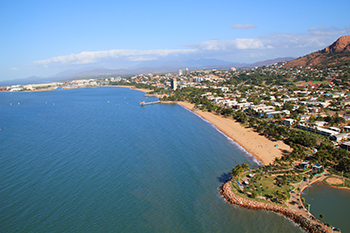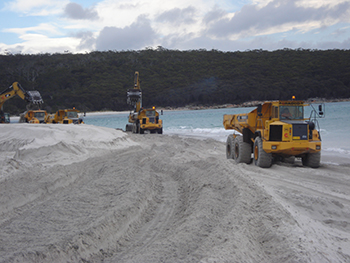
Coastal Engineering Solutions has provided design services and technical support to the implementation of many beach nourishment projects throughout Australia, South East Asia and the Pacific Region.
A beach nourishment strategy basically consists of:
- Initial Nourishment – through the placement of a sufficient volume of sand to establish sand buffers that accommodate erosion caused by a nominated Design Event.
- On-going Renourishment – given that a nourished foreshore typically experiences long-term erosion processes (which triggered the need for implementing an erosion mitigation strategy in the first place), it is generally necessary to recharge these erosion buffers by periodic placement of additional sand.

Dune systems established by beach nourishment need to be effectively managed in a manner consistent with natural processes. Appropriate management will assist in maintaining their natural ecosystem and ensure their structural integrity as
erosion buffers. Appropriate coastal vegetation traps wind-blown sand on foreshore dunes which might otherwise be blown inland. Therefore rather than being permanently lost from erosion buffers (and potentially creating a nuisance to nearby road and stormwater drainage systems), such trapped sand remains within the natural beach system.
Appropriate dune management will include the planting and protection of native dune vegetation, the clearing of weeds and other noxious species from the area, and the provision of controlled access through the dunes onto the beach.
Projects
- Dunk Island Resort, Qld
- Tweed River Entrance Sand Bypassing Project, Qld/NSW
- St Helens Dredging Alternatives, Tasmania
- Shangri-La Tanjung Aru Resort, Kota Kinabalu, Malaysia
- North Aspendale Beach Renourishment, Victoria
- Portland Sand Disposal and Beach Nourishment, Victoria
- The Strand Foreshore Redevelopment, Townsville, Qld

